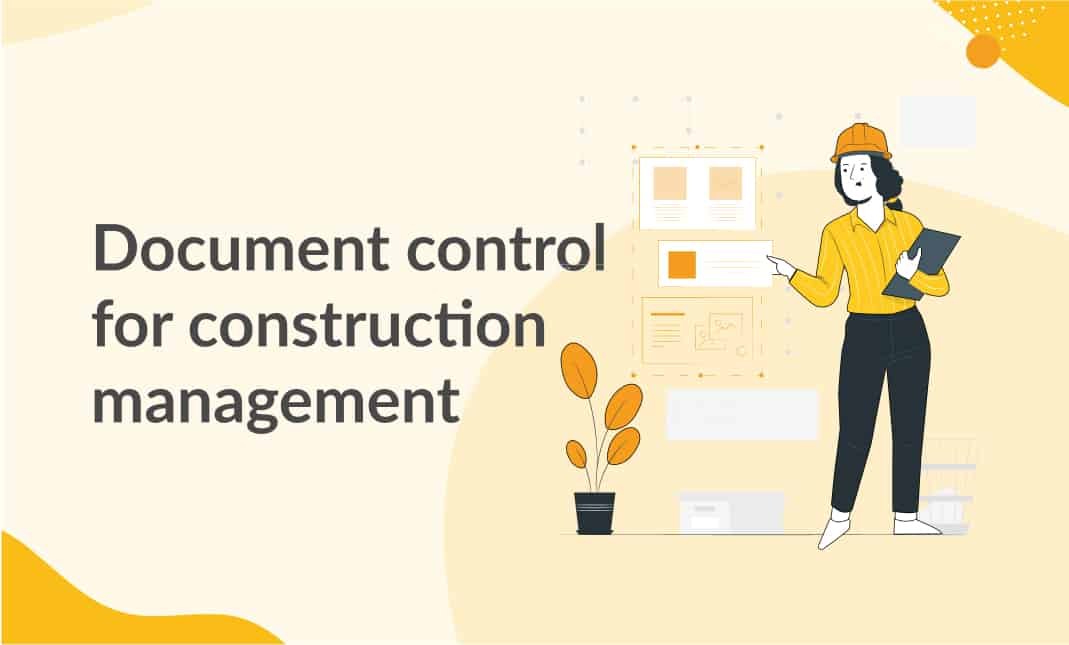Opening Effectiveness: The Benefits of Construction Document Management Platforms
Opening Effectiveness: The Benefits of Construction Document Management Platforms
Blog Article
Enhancing Process Effectiveness: Architect's Specialist Techniques for Construction Paper Administration
In the world of building design and construction, the precise administration of papers stands as a foundation for job success. These methods not just make certain smooth task development however likewise hold the crucial to opening improved efficiency and precision in the elaborate realm of construction document management.
Trick Record Company Strategies
When taking care of building papers, one of the key techniques that engineers use is developing a methodical and efficient company system. This system commonly involves categorizing papers based on their type, such as illustrations, specs, contracts, and permits. By creating clear and distinctive classifications, architects can promptly situate particular details when required, saving time and minimizing mistakes in the building process.
Within each classification, engineers further organize papers by creating subfolders or using numbering systems to denote variations or revisions (construction document management). This hierarchical structure makes sure that one of the most current and relevant details is conveniently obtainable while maintaining a record of changes made throughout the job timeline
In addition, architects frequently use digital paper administration systems that use features like keyword search functions, version control, and gain access to limitations to improve organization and partnership among job stakeholders. These tools improve the file retrieval procedure, promote real-time updates, and facilitate seamless interaction, inevitably adding to the total success of the building and construction job.
Collaborative Platform Combination
To optimize document management effectiveness in construction projects, architects flawlessly incorporate collective platforms to enhance interaction and simplify control among project stakeholders. By leveraging joint systems such as job administration software, cloud-based storage space systems, and interaction tools, architects can develop a central hub for all project-related records and interaction channels. These systems permit team members to accessibility, review, and work together on files in real-time, decreasing hold-ups and the danger of errors related to conventional file management approaches.
Collective system assimilation also promotes openness and accountability within the job group, as all stakeholders have exposure into the current job updates and alterations. By centralizing communication and paper sharing, engineers can make sure that all staff member are working from one of the most current information, reducing the opportunities of conflicts or misunderstandings developing as a result of obsolete files.
In addition, collaborative platforms enable seamless partnership in between designers, service providers, customers, and various other project stakeholders, promoting an extra natural and effective job operations. By damaging down interaction obstacles and facilitating information exchange, architects can drive productivity and development in building projects, eventually resulting in successful project end results.
Variation Control Finest Practices
Carrying out efficient version control methods is important for maintaining record precision and uniformity in building important source and construction jobs. By establishing a clear system for managing revisions, project groups can make sure that everybody is working from the most up-to-date documents, minimizing the danger of errors and disparities throughout the building phase.
Among the crucial finest practices for version control is to appoint one-of-a-kind identifiers to every file variation. This can be accomplished by utilizing a numbering system or day stamp that plainly indicates the order of alterations. By clearly labeling each model, employee can easily track the development of the file and recognize the most current variation.

Automation Tools for Efficiency

Document control software, like Procore or PlanGrid, streamlines job paperwork, making it conveniently accessible to all stakeholders. These platforms allow for real-time partnership, variation control, and automated back-ups, securing versus information loss. In Addition, Structure Details Modeling (BIM) software program automates click to read more the generation of construction illustrations and ensures that changes are synchronized across all related documents.
Integrating automation devices with cloud storage space remedies better boosts access and protection. By automating the file administration procedure, job teams can concentrate their effort and time on value-adding activities, eventually enhancing productivity and project end results.
Secure Information Management Solutions
Successfully safeguarding and taking care of project information is paramount in the building industry to guarantee discretion and integrity throughout the task lifecycle. Architectural firms can make use of encrypted cloud storage services to firmly share and keep task files with accredited personnel.
Additionally, making use of digital rights monitoring (DRM) tools adds an added layer of security by avoiding the unapproved circulation or replication of job papers. Normal data backups are necessary to mitigate the threat of data loss due to unforeseen situations like equipment failings or cyber-attacks. Collaborative platforms with built-in safety attributes check that make it possible for smooth communication and file sharing among job staff member while keeping information honesty.
Conclusion
To conclude, executing essential paper company methods, incorporating collective systems, practicing version control finest methods, using automation tools, and embracing protected data management services are vital methods for improving process efficiency in construction paper management. These expert strategies can streamline procedures, boost communication, guarantee accuracy, and maintain information safety throughout the building project lifecycle.
In the realm of building style and construction, the meticulous monitoring of records stands as a foundation for project success. These strategies not just make sure smooth project progression yet likewise hold the key to opening improved productivity and accuracy in the elaborate realm of building and construction paper administration.
To optimize record administration efficiency in building and construction jobs, engineers flawlessly integrate collaborative systems to enhance communication and enhance sychronisation amongst project stakeholders. These platforms allow group participants to access, review, and team up on files in real-time, lowering delays and the risk of errors associated with standard file administration approaches.
Using automation devices in construction document administration considerably enhances efficiency and enhances procedures for task groups. construction document management.
Report this page